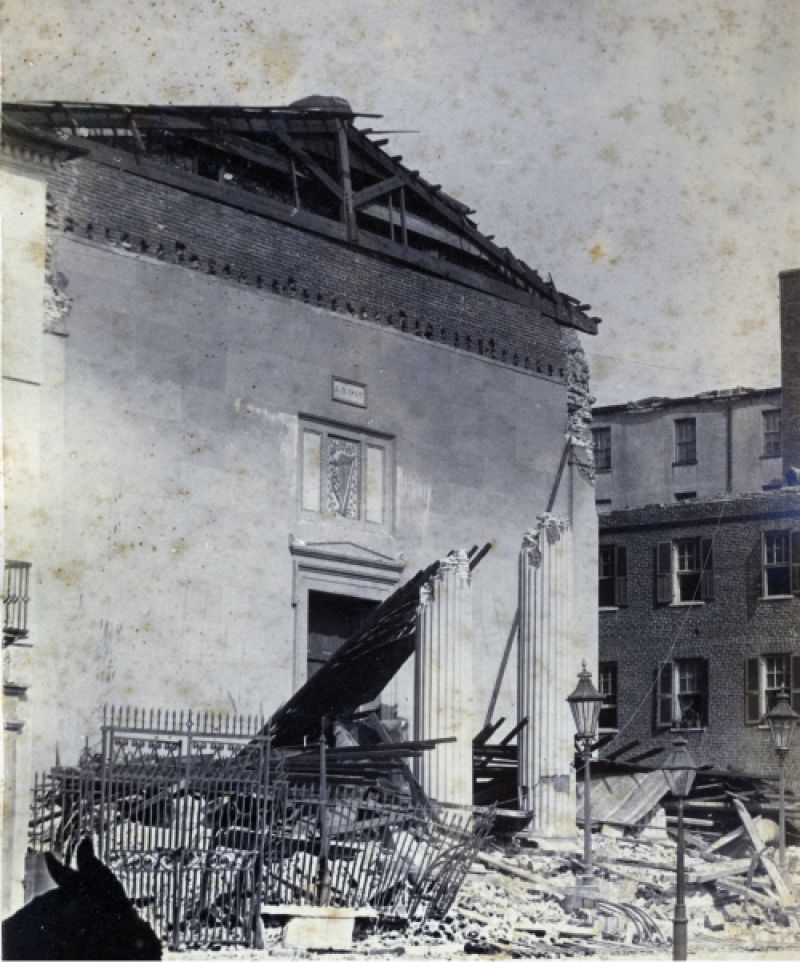
When “The Great Charleston Earthquake” shook the Lowcountry on August 31, 1886, the Richter scale did not exist, but if it had, that seismic shake-up would have registered as a whopping 7.3 magnitude, according to the U.S. Geological Survey. Many Charlestonians did not realize they were situated just 22 miles southeast of an active fault line until the shocks destroyed much of the city.
Hibernian Hall (pictured here the day after the huge quake) was one of many damaged local structures. The circa-1841 Greek Revival building with a three-story interior rotunda was designed by Philadelphia architect Thomas U. Walter, who later designed the Capitol dome in Washington, D.C. Following the disaster, the portico was rebuilt with alterations to the columns, and “a more elaborate modillioned cornice and an Italianate window” were added to the exterior, as cited in Jonathan Poston’s local architecture bible, The Buildings of Charleston. However, the majority of its original interior remained intact.
Today, Hibernian Hall still stands on Meeting Street, home to the Hibernian Society and host to many social events, including the annual ball of the exclusive St. Cecilia Society.